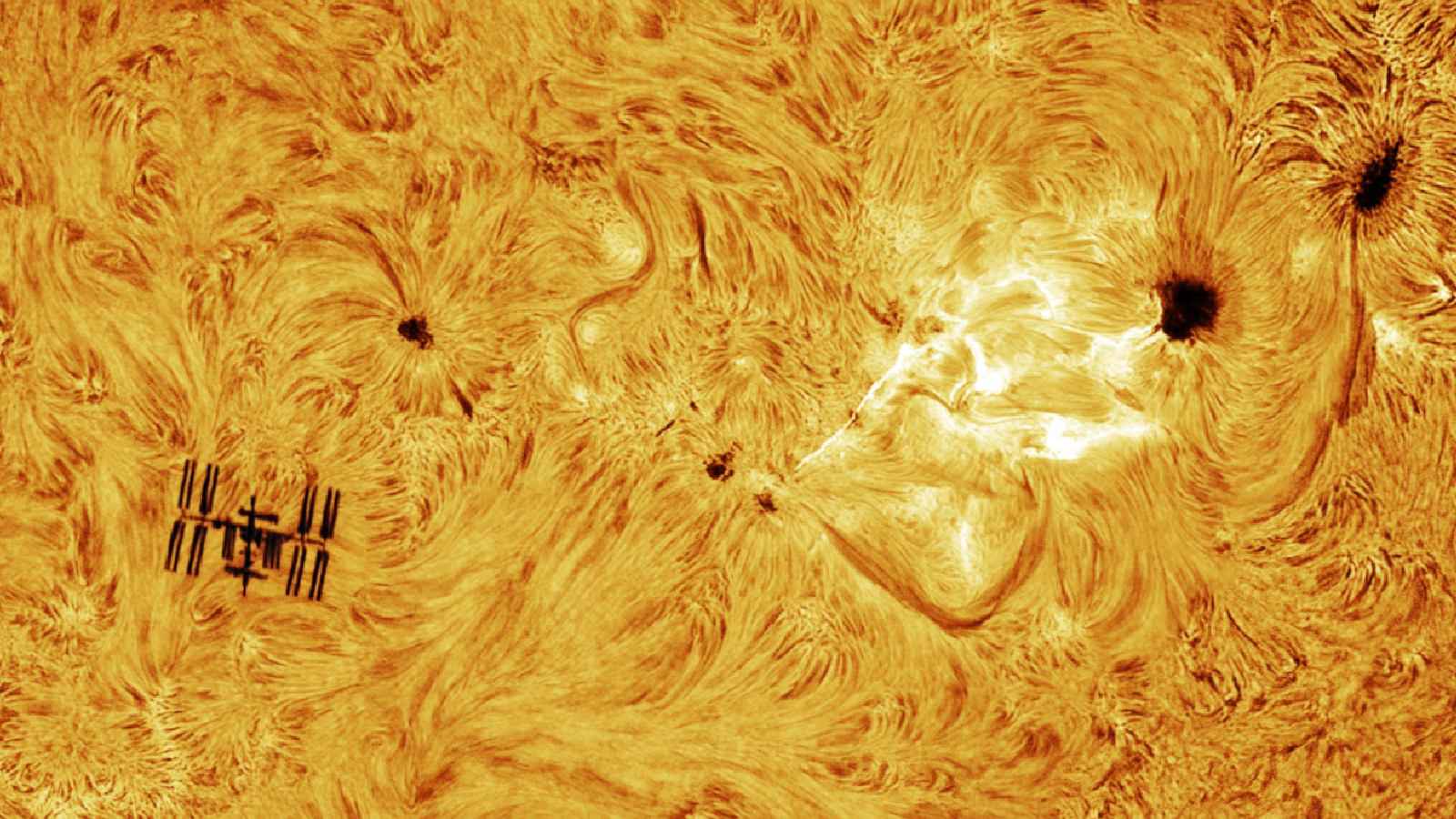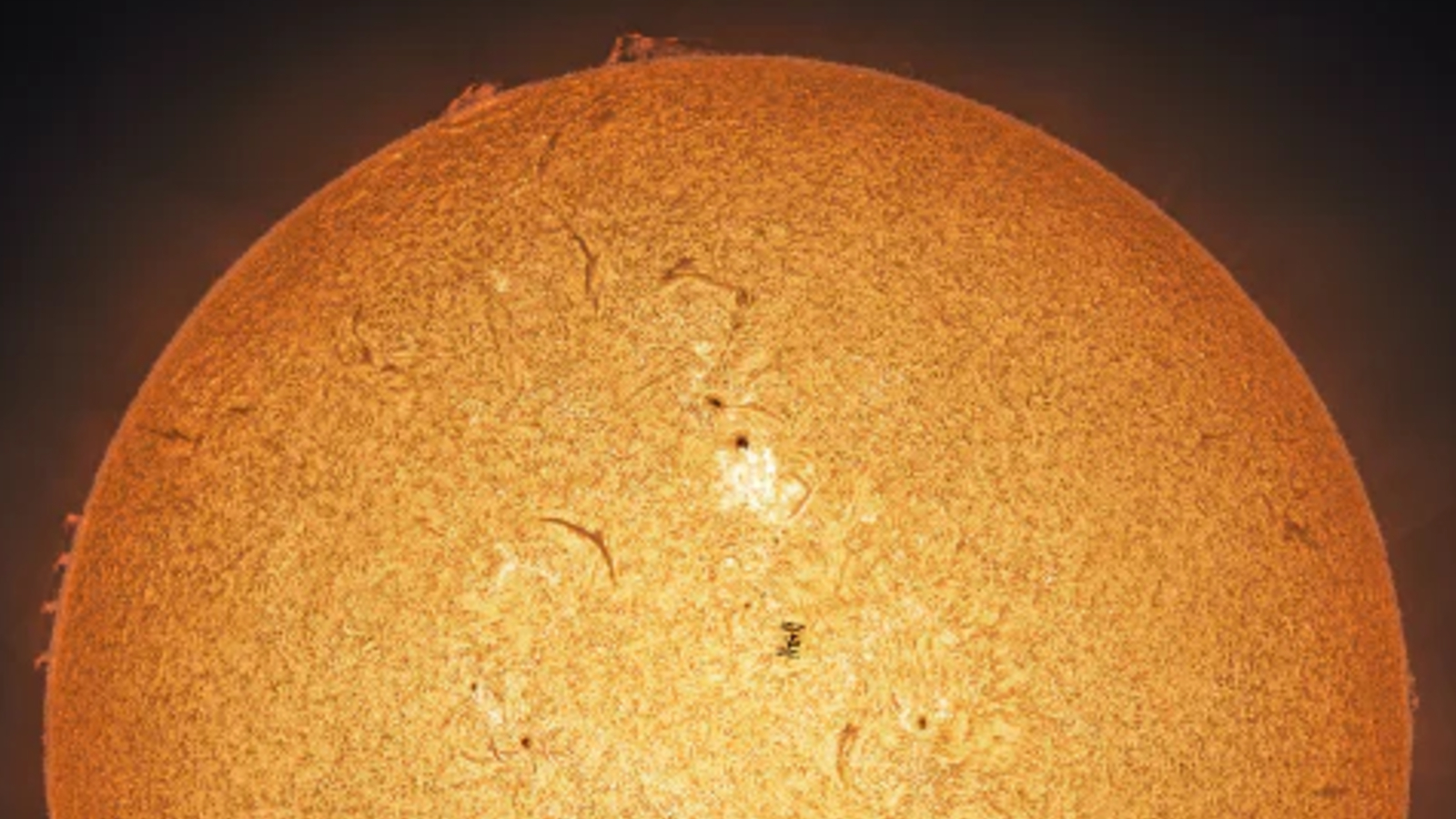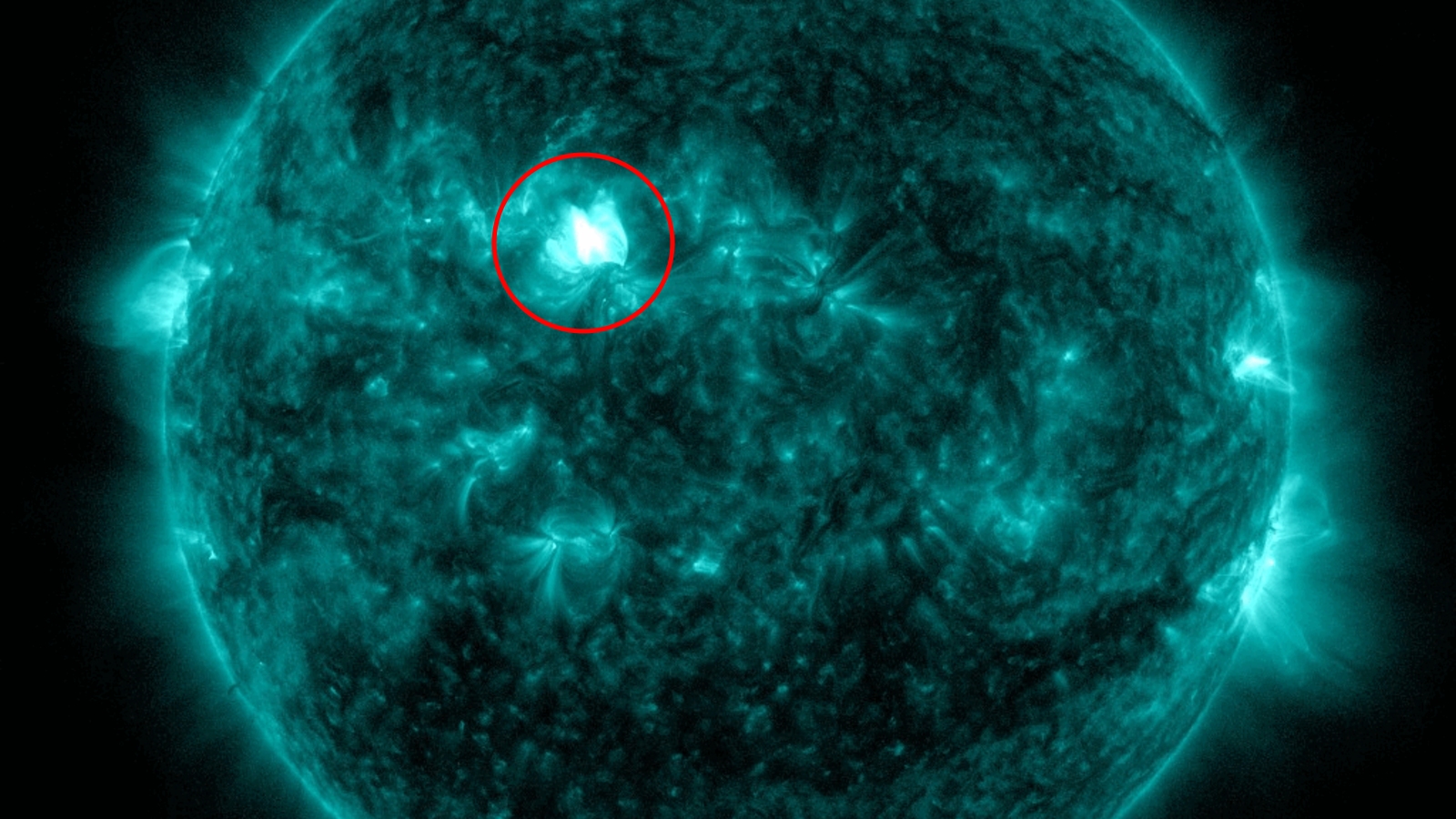
An astrophotographer has captured a stunning shot of a powerful solar flare photobombing the International Space Station (ISS) as the human-inhabited spacecraft appeared to zoom across the surface of our home star.
Andrew McCarthy (aka Cosmic Background) snapped the incredible image on June 15 from a spot in the Sonoran Desert in Arizona. He was initially planning to photograph a standard "transit" photo of the ISS passing directly between Earth and the sun. However, as McCarthy was setting up his camera, he noticed that one sunspot — dubbed AR4114 — had begun to "flare to life," he told Live Science.
Through a mix of skill and luck, McCarthy snapped the space station as it whizzed almost directly past the flaring sunspot, revealing superhot loops of glowing plasma, or solar prominences, moments before they were flung into space by a powerful explosion. Capturing both objects in a single frame makes this a "once-in-a-lifetime" photo, McCarthy wrote on the social platform X.
"Ever since I started chasing ISS [solar] transits, I've dreamed of catching one with an active flare," McCarthy told Live Science in an email. "When I saw the silhouette of the ISS flash through the frame, I knew it was something special."
Being separated from the sun by 93 million miles (150 million kilometers) shielded ISS astronauts from any potentially harmful radiation from the flare. This also makes the space station loom large in the photo. But in reality, the prominences were much larger, stretching up to five times wider than Earth's diameter. "Something about the small human elements against the scale and power of the sun feels like an inspiring scene," McCarthy added.

Solar flares are currently exploding from the sun more frequently than usual as the sun nears the end of the most active phase in its roughly 11-year sunspot cycle, known as solar maximum. During this period, magnetic instabilities make it much easier for chunks of plasma to break away from the solar surface.
The flare in the new photo is believed to be a powerful M8.46-magnitude blast that triggered a radio blackout across parts of North America as solar radiation temporarily disrupted the sea of plasma within Earth's ionosphere — the region of the atmosphere more than 30 miles (50 kilometers) above our planet's surface, according to Live Science's sister site Space.com.
Some of the plasma within the prominences also broke away from the sun entirely, forming a magnetized cloud of fast-moving particles known as a coronal mass ejection (CME), which glanced off Earth's magnetic field three days later.

McCarthy named the new photo "Kardashev Dreams" in honor of Nikolai Kardashev, a Soviet astronomer who famously proposed the Kardashev scale, which measures the technological advancement of a planetary civilization based on the amount of energy it can harness.
Photos like these are "a symbol of our first steps into a much larger universe," McCarthy said.
"Difficult" shot
Capturing the striking new photo was "much more difficult than I imagined," McCarthy said; to capture the best view of an ISS solar transit, you need to take the photo around midday, when the sun is directly overhead. And when you are taking the photo in the middle of a desert, as McCarthy did, this becomes very challenging, he added.
"Large telescopes, like the kind I need to use for these [photos], do NOT handle heat very well," McCarthy said. "Components flex and swell in the heat and currents of air of different temperatures swirl in the tube, making it nigh impossible to focus." Electrical components also start to overheat and shut down, he added.
To beat the heat, McCarthy strapped ice packs to the critical components of the camera to stop them from overheating and covered as much of the equipment in reflective foil as possible. "This kept the equipment barely working," he said.
Luckily, all the hard work paid off.
"This was the type of shot I've been chasing for so long, and I'm thrilled to add it to my portfolio," McCarthy said.







